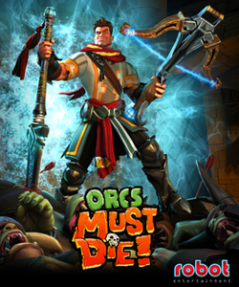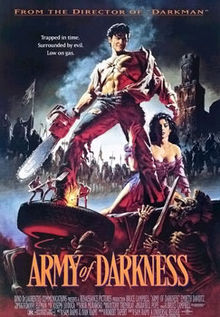I am a bit excited for the upcoming Ludum Dare game jam coming up on August 24th. My local game dev Meetup group here in Cleveland is even holding an event all weekend for it. What I would like to do with this post is share some of the lesser known tools that I use as a game designer / developer during a game jam. One quick note, I develop on Windows 7 and love both my Android phone and Amazon Kindle Fire. Some of these apps might not be available on Apple or Linux platforms.
Dropbox (Everything) – Free
Every developer should have a Dropbox account. It’s just too useful to have a 2 Gigabyte storage up on the cloud when ever you might need it. Another useful trick is that you can use the Public Folder to share not just game jam projects but also web pages. I usually write HTML5 games when I participate in jams and it’s kind of awesome to be able to copy my entire project including multiple JavaScript files, sounds, graphics and more and have it all work like a traditional web server. Plus, it’s FREE!!! No worries about bandwidth capacity, server up time or permissions.
Freemind (PC) / Mindjet (Android, Kindle Fire) – Free
So, it’s the day of the game jam. The theme’s been announced… Where do you start? I like to fire up a mind-mapping app and jot down any ideas that come to mind. I use mind maps to help me organize a thought and break it up into manageable pieces. As you grow the branches of the mind map outward and add more details you wind up with a pretty flexible framework for the game you want to build. One word of caution though, don’t get bogged down on too many details. Once you have a reasonable vision, get going and start executing on it.

One other quick note, the Mindjet applications for Android and Kindle Fire both support Dropbox synchronizations. You do not have to sign up for a Mindjet Connect account to enable this feature. And if you configure Mindjet to export Freemind compatible files, then you have a way to share that mind map between a variety of devices. During the last Ludum Dare, I wrote my mind map out on my PC using Freemind, uploaded it to Dropbox, sync’d it back down to my Kindle Fire which I had propped up on my desk as a kind of extra monitor. Little things like that make the work easier.
Caustic 2 (Android, Kindle Fire) – Free / $7.99 for Pro Version
Caustic is a fantastic tool for creating electronic music on touch screen devices. You get an array of drum machines, bass line machines, synthesizers, effects, a mixer and a sequencer all in a single app. And the default samples are pretty impressive including some classic techno / rave scene gear like the Roland 808 & 909 drum machines. There’s an active Caustic community constantly releasing additional sample packs available on both the Google and Amazon app stores as well. During the last Ludum Dare game jam, I was composing music on my cell phone as my kids ran around a playground. That sort of flexibility is pretty useful when you need to step away from your computer.
One key note though… The only way to export songs in WAV, OGG, and MIDI formats is to purchase the “Pro” unlock key for $7.99. I’ve used headphone patch cords to feed the audio from my cell into my laptop’s Mic jack but you do lose a lot of quality in the process. Purchasing the app, saving your song as an OGG file and transferring it via email or USB cable is worth the $8 price tag if you enjoy using the free version.

Notepad++ (Windows) – Free
Notepad Plus Plus is not just a text editor app… it’s kind of like a light-weight development environment. Notepad Plus Plus is able to open a variety of files and apply syntax highlighting intelligently to that file. Opening a C#, HTML, CSS, JavaScript, XML or JSON you can even get limited auto-completion of function names and syntax as well. It’s not going to replace a bigger IDE (I prefer Jetbrains’ WebStorm for HTML5 work and Visual Studio Express editions for C# work) but for quick file references or editing, it’s a great tool to have around.
Pocket (Variety) – Free
Pocket is not going to help you develop a game jam idea but it’s an amazingly useful tool for organizing articles and bookmarks. Pocket allows you to unify URLs under a single application. For example, I have the Pocket add-on installed in Chrome. Click the Add to Pocket button and whatever web page URL is saved on Pocket. Use the Pocket app on your smartphone or tablet to view that article. Use that same Pocket app to save tweets from Tweetdeck. And, while browsing the articles you can tag the links with subjects such as “game dev”, “ideas” or whatever you need to group it by. It doesn’t sound like much but being able to look up a tag like “pixel art tutorials” on any device you have handy and see a collection of articles you’ve found over Twitter, Facebook, websites and RSS feeds is extremely nice.
Honorable Mentions
AndChat (Android) – Free
My Meetup group has used free Mibbit IRC channels for text chat during past game jams and AndChat is a great Android IRC client to join in and keep connected to the conversation.
Paint.Net (PC) – Free
Don’t be thrown off by the name, Paint.Net is a free, practical graphics application. It’s a light-weight Photoshop clone that supports layers, alphas, gradients and other whizband graphic stuff that I really can’t appreciate. Yeah, I’m developer, not an artist but for me, this tool works perfectly.
PyxelEdit (Various) – Free
PyxelEdit is a pixel art graphics tool. It’s a little quirky but it’s kind of nice for rapidly shifting similar pixels (terrain) around.

































 At this past Cleveland Game Devs meeting, I was in a discussion about the Ouya and made the comment that “Indie games are punk rock”. I think that is my perfect analogy as to what an “indie” game actually means to me. They don’t have to be artistic or convey a purpose. They can be completely abstract and pointless. They can be experimental. They can be text based, or 3D or paper or in our imagination. I want my indie games with grit and grime on them. I want them to be incomplete or buggy or exploitable. I want the artists to be free to create any experience they choose to. I want my indie games to be like the Sex Pistols, Black Flag, or The Ramones. I want to hear static, microphone noise, sloppy guitar work, off the wall lyrics. I want to be stunned by brilliance or shocked by audacity. Games by Auntie Pixelante, Jason Rohrer, Edmund McMillen and Introversion are “punk rock”. The only label that really matters is that it even exists.
At this past Cleveland Game Devs meeting, I was in a discussion about the Ouya and made the comment that “Indie games are punk rock”. I think that is my perfect analogy as to what an “indie” game actually means to me. They don’t have to be artistic or convey a purpose. They can be completely abstract and pointless. They can be experimental. They can be text based, or 3D or paper or in our imagination. I want my indie games with grit and grime on them. I want them to be incomplete or buggy or exploitable. I want the artists to be free to create any experience they choose to. I want my indie games to be like the Sex Pistols, Black Flag, or The Ramones. I want to hear static, microphone noise, sloppy guitar work, off the wall lyrics. I want to be stunned by brilliance or shocked by audacity. Games by Auntie Pixelante, Jason Rohrer, Edmund McMillen and Introversion are “punk rock”. The only label that really matters is that it even exists.





